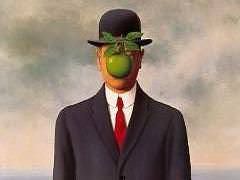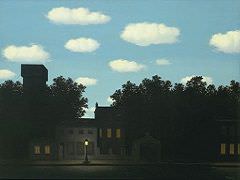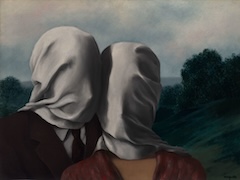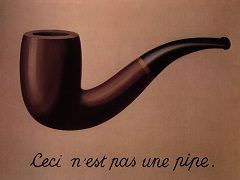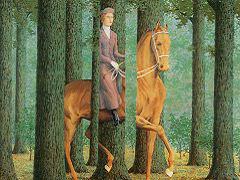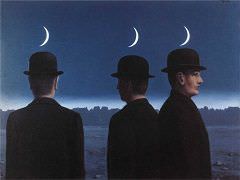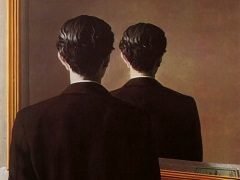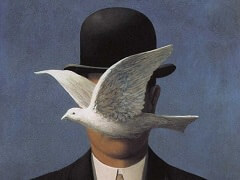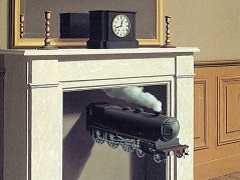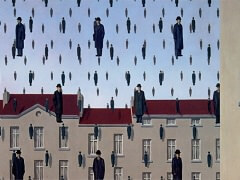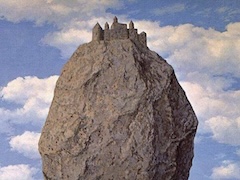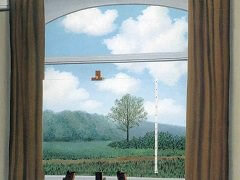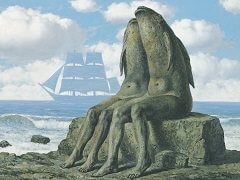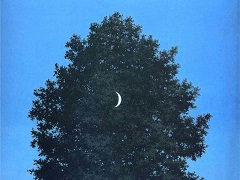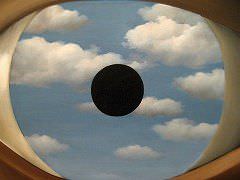On the Threshold of Liberty, 1937 by Rene Magritte
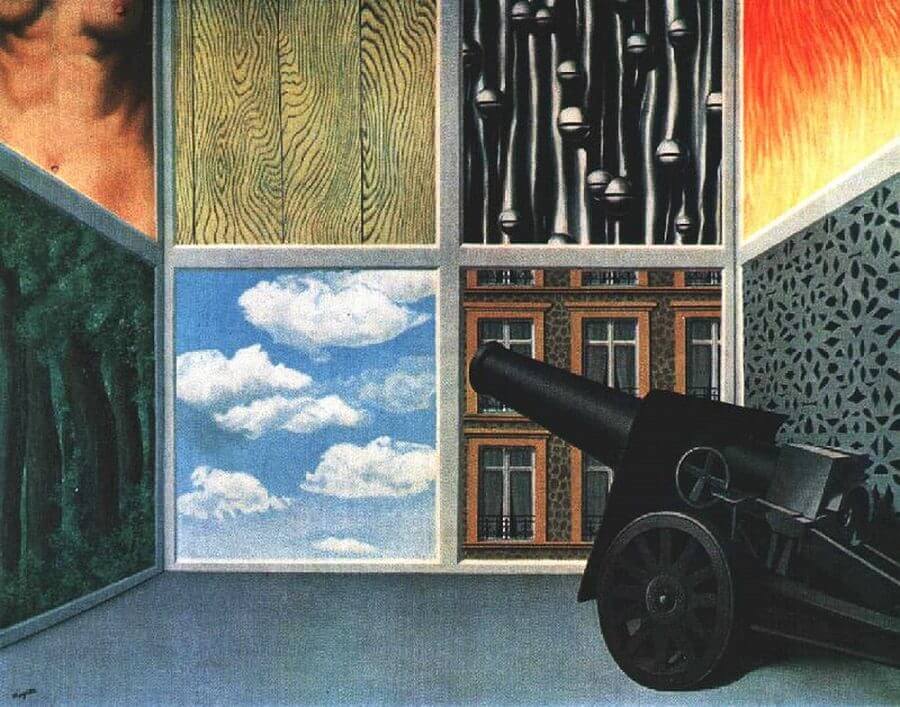
On the Threshold of Liberty is a controversial piece by Rene Magritte. It is a prime example of pre-world war two surrealism, which is also an example of the fusion of pre-surrealism/post-dada movement: a modal
intermediate between 'anti-art' and the expressionistic ideas of dreams presented by the works of Carl Jung that symbols have meaning based in dreams. Through these ideas of semiotic studies, the expressionism used with
varied images to convey surreal contortion of art, making use of dream images fused into paintings. It was a common element to use the 'collective conscious' idea as a mantra for painting in the surrealist movement:
creating a fabricated reality with no coherent meaning other than what the observer created.
The painting itself contains multiple panels (or windows), eight in total, all of which make up a room with a solid granite floor. Axillary cannon in the right hand side of the room, pointing into the top left corner are
the only 'tangible' item in the painting. On the wall starting at the top-left corner going clockwise: busk of a woman's bare torso, a wood panel, what appears to be bamboo in the next, and finally a wooden panel. On the
bottom row from left to right: a forest, fluffy clouds in the sky, windows of a high-rise building, and a brick wall.
Individual pictures, like the entire painting are set neither in night or day. The trim on the borders between the panels are a simply beige, neutral like the grey-scaled floor and ceiling. The cannon's look is very
realistic, one of use that would have seen civil war times. Magritte's piece makes use of ample colors: all of the panels on the wall use a different vibrant color, from blue, to sand, to green, red and blue. For each
window, these colors remain thematic with the ascribed space. With all the colors in mind, the image that most sticks out is the cannon pointing at the woman's torso panel in the top left corner, aiding the overall
ambiguity of juxtaposed images.
Magritte is careful to use these different colors in each panel; it seems to add to the mystery of the painting. There is no define pattern, but they make for a strange impression. Combined with the panels on the walls and
ceilings, the cannon still sticks out oddly, appearing esoteric to even the out of place walls. Since there is little use of the variance of light, the piece is balanced, making for a very bright display of dull yet
different colors, never hindering the overall experience of light or darkness.
Like many of his pieces, Magritte used strange imagery to confuse the observer: Magritte often challenged conventional viewing methods. There is no central theme to the piece, that other colors of the separate so evenly,
the pictures are all unrelated, meanwhile, the cannon sits alone, idly making nuance of the room around it. However, there is a strange idea: that each of the panels being completely filled, creating a wall like affected
with different color semiotics describing the piece. It was carefully done so in such a weird pattern to show some sort of limitation to what the eye can describe. This comes with the focus of the painting, that the eye
is given so much to absorb, that its ultimate meaning is the difficulty ascribing meaning to it.
A fine example of surrealism, Rene Magritte continued with previous pieces, showing the 'dishonesty' that images can convey reaffirming that the eye can be both tricked but amused. Despite being a controversial painting
upon its release, it remains so to this day. It serves as an inspiration for an artist to use symbols, detractors and description to create a painting without having a define meaning. The strange images combined with the
name of the piece still leaves hints of confusion. While being very well executed in terms of color use, hues, shapes, and symmetry between the flow and rhythm of the piece, Magritte has created a challenging work of art.
It may be difficult to interpolate a meaning, or connection, but perhaps the connection lay within the individual discovery.

